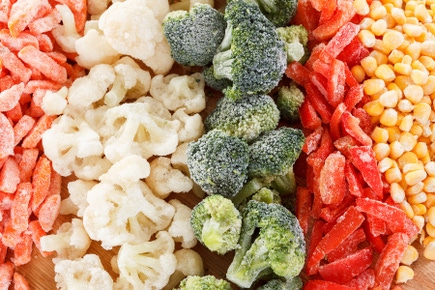
How to choose a healthy recipe
Do you often find it difficult to know what to look out for when searching for quick, easy and healthy dinner recipes? It can be tough to find recipes that you know your family will love, while also being convenient, budget-friendly and packed with nutrients to boost your health.
Knowing how to identify a healthy recipe, nutritionally balance your meals and understanding how to substitute ingredients for more nutritious options can transform your cooking. For instance, swapping refined grains for whole grains, choosing plant-based and lean proteins, and incorporating a variety of fruits and vegetables into your meals can increase the fibre, vitamins, and minerals in your diet without sacrificing flavour.
What makes a recipe healthy?
A balanced diet is built on five essential food groups:
- Fruits
- Vegetables
- Grain foods, especially wholegrains like wholegrain bread and breakfast cereals, brown rice, quinoa, or wholemeal pasta
- Proteins, like legumes, tofu, nuts, seeds, eggs, fish, poultry or lean red meat
- Dairy, including milk or calcium fortified plant-based milk alternatives, yoghurt and cheese
It’s also recommended to include healthy fats in your meals, like extra virgin olive oil or other vegetable oils, nuts, and avocado.
Each group plays an important role in providing the nutrients your body needs to function at its best. While you don’t need to find all 5 groups used in every recipe, considering them when planning your weekly menu can help ensure you choose recipes that promote a balanced, well-rounded diet rich in goodness.
An unbalanced diet can lead to serious health implications. Poor nutrition, such as consuming too much salt and not eating enough fruit, vegetables, wholegrains, and legumes, is a leading cause of preventable death and disease in New Zealand. Maintaining a balanced diet helps prevent common lifestyle diseases like obesity, high blood pressure and uncontrolled diabetes.
By including foods from each food group into your meals, you'll create satisfying, nutrient-rich dishes that taste great and support your health and well-being. Remember, if a particular food group is missing from one meal, aim to incorporate it into another later in the day. This intentional planning promotes overall dietary balance, ensuring you consistently meet your nutritional needs while enjoying a diverse menu.
Choosing balanced meals and the best recipe for optimal nutrition
There is no better time than now to focus on making informed food choices. By taking small, intentional steps, you can set the foundation for a healthier lifestyle that benefits you in the long term.
When choosing a recipe, we encourage you to consider the following factors:
- A balanced plate: Look for recipes that include a variety of food groups as recommended by the New Zealand dietary guidelines. As a guide, you want to aim for at least ½ of your meal to be made up of vegetables or salad, ¼ of your meal to be made up of grains or starchy vegies like potato or kumara, and ¼ to be made up of protein rich foods.
- Plant-based extras: If a dish doesn’t contain any vegetables, serve a smaller portion then add half a plate of salad or vegetables. Consider delicious plant-based sides like a salad or slaw to enhance your meal
- Nutritional balance: We recommend looking for main meal recipes with fibre containing ingredients like legumes (peas, beans, lentils) or wholegrains such as wholemeal bread, rice and pastas. To identify recipes likely low in saturated fat, look for dishes with healthy fats such as olive oils, avocado, nuts and seeds. Choosing recipes lower in sodium is also important to help look after your heart health. Aim for dishes using herbs, mild spices, lemon juice or vinegars to enhance flavours.
A balanced day could include:
- Breakfast: a delicious bircher pot high in protein, with fruit, and healthy fats like almonds and chia seeds.
- Lunch: a flavourful sandwich with a delicious combination of nutritious fillings, quality carbs from rye bread and high in protein.
- Dinner: a hearty pasta dish packed with veggies, a plant-based protein source and wholegrain pasta for a source of quality carbs.
Understanding portion sizes
To ensure your meals are both satisfying and aligned with your health goals, be mindful of portion sizes when choosing recipes. Aim for dishes that are not only nutritious but also served in appropriate portions to help manage your overall intake.
Healthy swaps
You may have come across a tasty new recipe or have a favourite meal that doesn’t quite meet your health goals. The good news is that you don’t have to abandon them; instead try some nutritious tweaks:
- Swap white bread for whole grain bread or wholemeal flatbread.
- Try wholegrain brown rice, brown pasta or quinoa instead of white rice and pasta
- Replace half of the white flour with wholemeal flour, or oat flour/bran when baking muffins, biscuits, and slices
- Go for wholegrain crackers instead of water crackers
- Use low fat Greek yoghurt instead of sour-cream, ice-cream or cream
- Try margarine, avocado, hummus, tahini, nut butters instead of butter, coconut oil or ghee as healthy spread alternatives
- Roast potato with olive oil instead of pre-packaged chips or wedges
- Sprinkle herbs and mild spices instead of salt
- Drink water instead of soft drink or juice during meals
To make your meal planning easy, our Sanitarium team has created a wide selection of healthy, balanced recipes designed with Dietitians for you to explore. You’ll find them here.

The latest nutrition advice, plus health and wellness tips delivered to your inbox monthly

